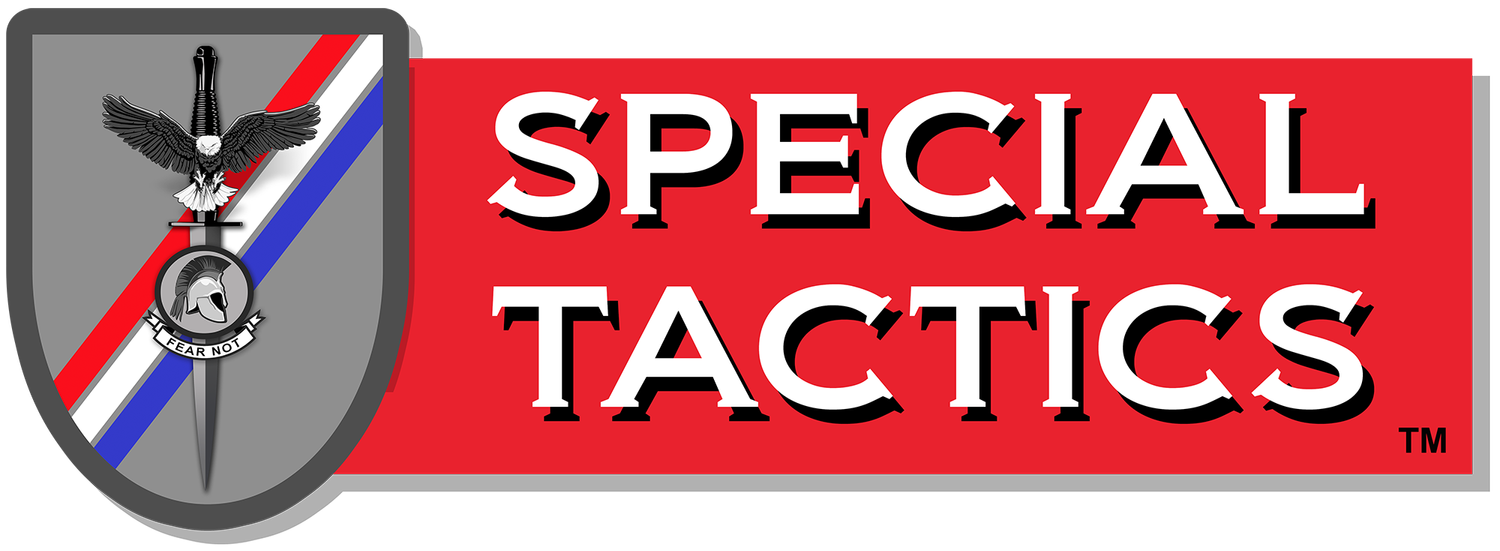Combat Fitness (Part 1): A Mission-Focused Approach
Many debates on tactical fitness focus on the question of which exercises or routines are the most effective. We believe this is the wrong question to be asking. The more important question is, how do we measure whether a fitness program actually improves effectiveness in a given mission set? In the new manual Comprehensive Combat Fitness Training (available for pre-order), Special Tactics provides some answers to this question. Part 1 of this three-part article offers five common sense fitness principles that provide a good starting point for thinking about combat fitness.
1) Develop a Combat Performance Evaluation: The essential starting point for building every aspect of your training program, including the fitness routine, is first developing a combat performance evaluation. Most performance evaluations in military units test only one attribute at a time (marksmanship, fitness, casualty care) in an isolated environment. A combat performance evaluation tests multiple skills/attributes simultaneously under realistic conditions with little or no warning provided to those being evaluated. The following are some notes on developing a good combat performance evaluation:
Replicate realistic mission/combat scenarios as closely as possible.
Test multiple combat skills/attributes in a single evaluation.
Those evaluated should never know what to expect on the test.
Evaluations do not have to be long, complicated, labor-intensive or expensive.
Try to conduct at least one short and simple evaluation each week.
Record the results (preferably with video) to track progress over time.
2) Develop a Fitness Program Based on Evaluation Results: Performance failures in the evaluation will highlight fitness deficiencies that are affecting mission performance. Are team members having trouble shooting accurately because they are breathing too hard? Are team members not strong enough to drag casualties or climb walls in their gear? The combat performance evaluation helps you develop a fitness program that fits your specific mission requirements. No single fitness program is the right fit for all tactical units. For example, if you are in a military long-range reconnaissance unit, it is probably not in your interest (or in the interest of your teammates who might have to carry you) to focus on weight training and increasing body mass. Conversely, cross-country mobility is not as important for a member of a tactical team tasked with controlling prison riots. Subduing angry inmates (who spend most of their time lifting weights) requires maximum body mass, explosive strength and speed. The program must fit the mission.
3) Develop Metrics to Measure and Track Physical Performance: Once you determine which physical attributes and exercises are most critical to mission success, you then must track your rate of improvement in those attributes and exercises. Even dedicated athletes often do not bother to track their performance. How is it possible to know if a fitness program is truly working if you are not aware of how changes in the program affect the rate of progress? While it can be tedious, it is critical to record your performance in every physical exercise and track progress over time. Ideally, you should then make minor adjustments to the routine, nutrition and recovery and measure whether these changes increase or decrease the rate of performance improvement. This will help you optimize the program design.
4) Adjust the Program Based on Individual Body Type and Personal Preference: Even if members of a unit all share the same mission requirements, that does not mean they must all share the exact same fitness routine. Everyone’s body is different. A program that works for one person may not work equally well for someone else. Therefore, while remaining aware of mission requirements, use the program that is the best fit for you, physically and psychologically. It is fine to incorporate existing commercial routines, athletic routines or military routines that have worked for you in the past, as long as your combat performance evaluation score is increasing.
5) Focus on Preparing for the Worst-Case Scenario: One critical factor in combat fitness training is that combat fitness often proves the most important in the “worst-case scenario.” A direct-action assault unit might not expect to have to conduct a grueling escape and evasion across the desert. However, their ability to do so might mean the difference between life and death should things go wrong on their mission. Therefore, in developing combat performance evaluations, incorporate unexpected setbacks or a simulated worst-case scenario.
These 5 principles are only a starting point for increasing your combat fitness. The Comprehensive Combat Fitness Training manual provides detailed instructions for how to apply the principles just described in different situations. Whether you are a unit leader/commander or an individual citizen, the same core principles of combat performance evaluation, program development, physical performance testing, personalized adjustment and worst-case scenario planning will prove useful. Stay tuned for PART 2 of this article that will discuss how to design and implement combat performance evaluations.

